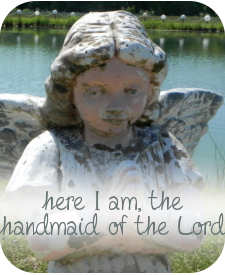So a few years ago I took Foundations of Catholicism with Chris Padgett and had to do a 10 page term paper on whatever topic I wanted. I chose to do it on the liturgical seasons of the Catholic Church for two reasons. The first was because I love the richness of the liturgical seasons and find that, if reflected on, the depth of their tradition and symbolism can add so much to our faith and prayer life. Secondly, though I didn't realize this in the beginning it quickly became apparent, it was a topic that could easily be stretched to 10 pages.
Here is what I wrote about advent, a great summary.
Advent: “O Come, O Come Emmanuel”
The first Sunday of Advent marks the beginning of the Church’s liturgical year. Advent is a four week season during which the faithful prepare themselves for Jesus’ coming, both his coming in our celebration of the nativity and also His promised second coming. The liturgical color of the season is purple. The spirit of the season is meant to be penitential though not as penitential as Lent.
A common way Catholics mark these weeks is by using an advent wreath. Advent wreaths are used both in the church and at homes. The wreaths were first used by Lutherans in Germany during the sixth century but by the mid 1900s they became popular among Catholics. Advent wreaths come in a variety of styles but a typical Advent wreath consist of four candles, three purple and one pink, inserted into a wreath of evergreen branches. The pink candle is lit on the third Sunday of Advent, commonly called Gaudete Sunday. Gaudete means ‘rejoice’ and the Church rejoices because Advent is halfway completed and the coming of Christ is near. The candles are lit one at a time over the four week period symbolizing a lessoning of darkness and an increase in light. Greg Dues writes, The symbolism of the advent wreath “lies in the tension between darkness and light. It represents the long time when people lived in spiritual darkness, waiting for the coming of the Messiah, the light of the world. Each year in Advent people wait once again in darkness for the coming at the end of time, and his special coming in every moment of grace.” is physical symbol represents the physical growth occurring in the faithful during the season of advent.
The Catachism of the Catholic Church states,
“When the Church celebrates the liturgy of Advent each year, she makes present this ancient expectancy of the Messiah, for by sharing in the long preparation for the Savior’s first coming, the faithful renew their ardent desire for his second coming.” The people of the Old Testament prepared and waited for the coming of their Savior.
We, the people of the New Testament also wait, wait for His coming again at the end of time. “To detach Christ’s first coming from his second coming tarnishes both events. Jesus’ second coming could not exist without the first coming.” For this reason, the season of Advent is a season of hope, a longing for the fullness of God’s reign on earth. Through the Advent, the faithful are welcomed to ready their hearts for Christ’s coming.
I hope you are embracing this season and preparing for Christ's coming-both as an infant in the manager and His second coming.
Live joy.
Saturday, December 1, 2012
Subscribe to:
Post Comments (Atom)









No comments:
Post a Comment